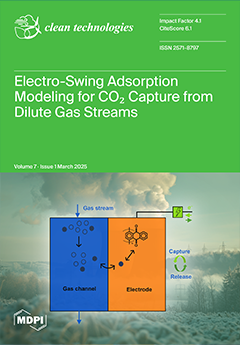Vehicle washing facilities (VWFs) consume substantial amounts of potable water and produce wastewater containing pollutants such as hydrocarbons, detergents, and pathogens, presenting significant environmental and operational challenges. This study evaluates Nature-based Solutions (NbS) for wastewater treatment and recycling at a pilot facility in
[...] Read more.
Vehicle washing facilities (VWFs) consume substantial amounts of potable water and produce wastewater containing pollutants such as hydrocarbons, detergents, and pathogens, presenting significant environmental and operational challenges. This study evaluates Nature-based Solutions (NbS) for wastewater treatment and recycling at a pilot facility in Girona, Spain, aiming to reduce potable water consumption and ensure safe reuse while minimizing environmental impact. Over a two-year period, three systems—a Vertical Flow Treatment Wetland (VFTW), Horizontal Flow Treatment Wetland (HFTW), and Infiltration-Percolation (IP) filter—were tested. Thirty-two parameters, including physicochemical (e.g., turbidity, nutrients, heavy metals, detergents) and microbiological indicators (e.g.,
E. coli,
Legionella spp.), were monitored. VFTW and IP systems were the most effective, reducing turbidity below 5 NTU, COD to under 20 mg/L, and
E. coli below 10 CFU/100 mL, meeting Spanish reuse standards. The HFTW effectively removed organic matter and nutrients but faced challenges such as clogging and reduced hydraulic performance, making it less suitable for carwash wastewater. Together, these systems enabled up to 60% water reuse, with final chlorination ensuring microbial safety, particularly against
Legionella, while meeting Spanish reuse standards. This study highlights the potential of NbS as sustainable, low-energy solutions for wastewater recycling and pollution control in vehicle washing facilities.
Full article





